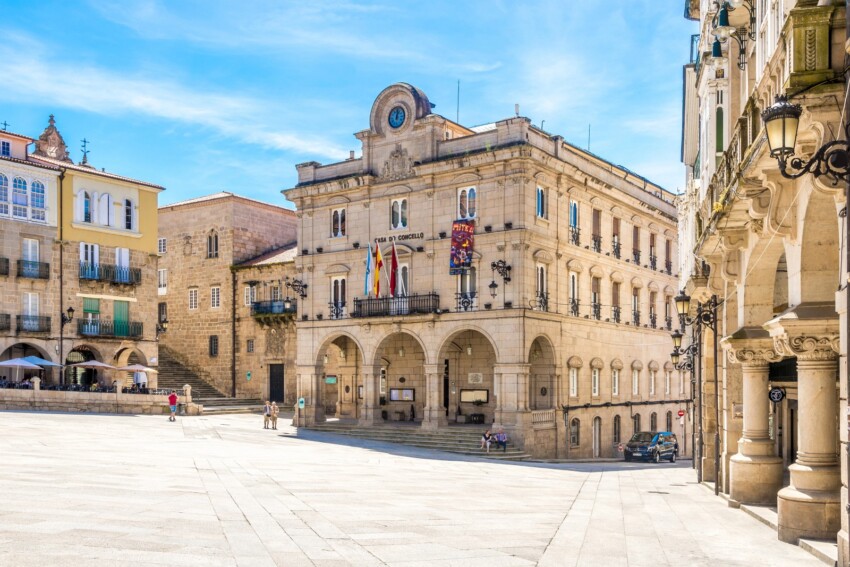

Known as ‘the city of water’, Ourense is a town in Galicia famous for its thermal waters. The city’s origin dates back well before the ancient Romans when these territories were the crossroads of numerous nomadic tribes, some of which built an initial settlement here around the city’s thermal water springs. With the arrival of the Romans, a real urban centre was founded in Ourense, thanks also to the construction of a bridge over the Miño river that provided a strategic communication route.
After the decline of the Roman Empire, the city was for a long time capital of the Swabian Kingdom before being destroyed by both the Arabs and the Normans. Rebuilt several times, Ourense now stands in the valley of the Rio Miño and is still considered an important centre for communication and transport as three motorways, four national roads and four railway lines converge here.
The city’s main attraction today is its thermal waters that flow from several springs, known as burgas. Many of the springs are located in the centre, while others are on the outskirts. Most of these springs have remained free, while others have become chargeable.
Ourense is a small town that, despite numerous invasions, has managed to preserve some sites of historical interest over time. The heart of the city is undoubtedly the Plaza Mayor square, which has always been the hub of social and commercial life. The symbol of Ourense is the Old Bridge (Puente Mayor) that was built by the Romans to connect the banks of the Miño River and facilitate communication between the territories of the area.
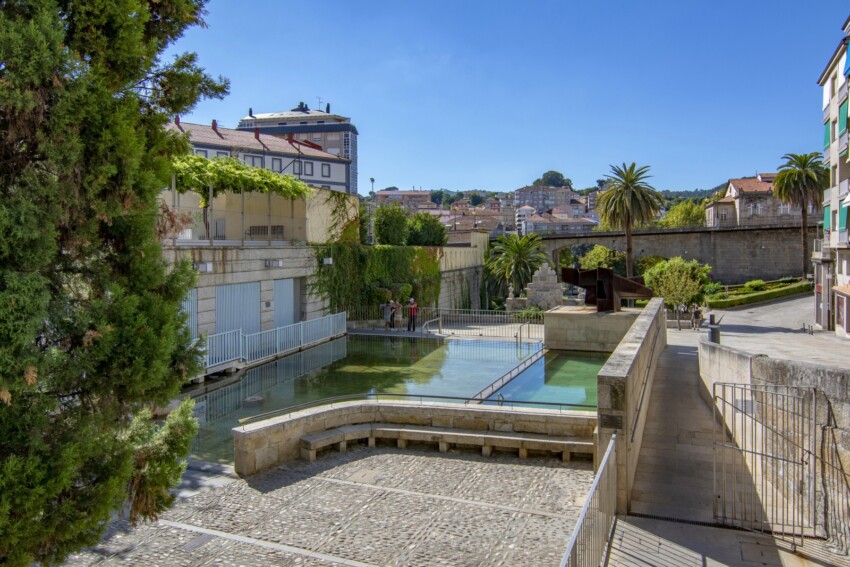
It is impossible to visit Ourense and not try its thermal waters that originate from underground aquifers more than a kilometre deep. The ancient Romans had already realised the importance for health of these waters that flow at a temperature of 60º – 65º C.
Among the city’s most famous ‘three springs’ are the ‘Burga de Arriba’, the monumental fountain known as the ‘Burga de Abaixo’ and the central esplanade where the thermal pool is located. The oldest fountain is the ‘Burga de Arriba’, which dates back to the 17th century, while the ‘Burga de Abajo’ dates back to the 19th century and was built in neoclassical style with two lateral mouths and a baptismal font in the centre.
Along the Miño River, there is also a ‘thermal path‘ that stretches for about four kilometres. Here, surrounded by greenery, there are up to seven thermal baths, many of which are equipped for bathing, so it is possible to alternate between relaxing and bathing in the midst of nature in both winter and summer.
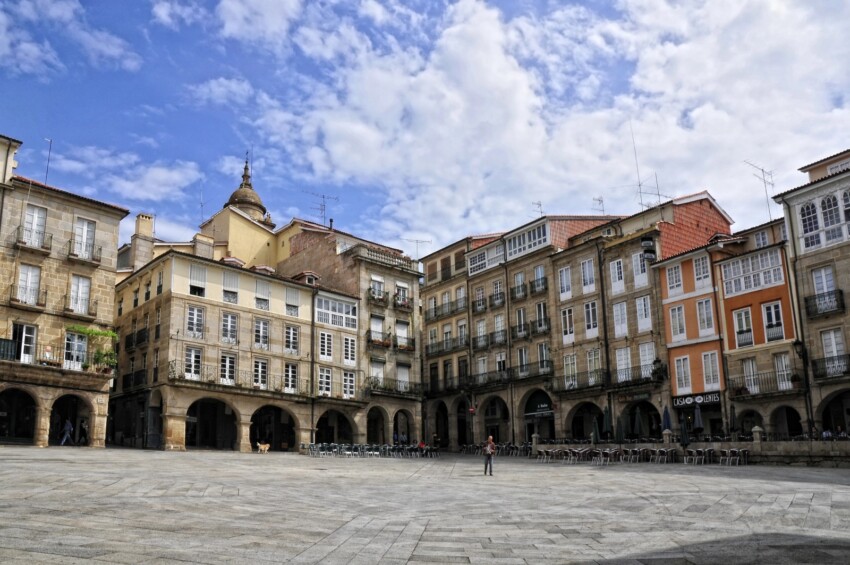
Piazza Mayor is the centre of the city and the site of the Casa Consistorial (the Town Hall) and the Archaeological Museum, now housed in Pazo do Bispo, the Bishop’s Palace. This area with its still medieval atmosphere allows all visitors to take a real trip back in time. Here there are many historical buildings and arcades housing bars, restaurants and shops. The Plaza Mayor is also the place where events, festivals and other celebrations are organised.
A flight of steps also leads from the square to the Church of Santa María Madre, another of the city’s must-sees. Other buildings worth a mention include the Fermín García house, which was designed by Vázquez Gulías and is a beautiful example of modernist architecture in Ourense.
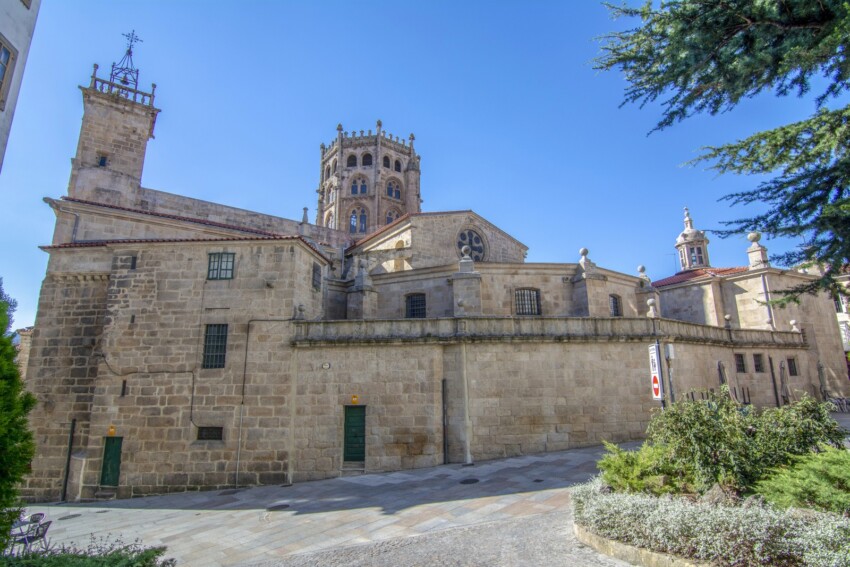
The Cathedral of San Martiño is a church built in the 13th century that has been restored several times. On the outside is the Portico of Paradise, also dating from the 13th century and apparently inspired by the Portico of Glory in the Cathedral of Santiago.
The north portal, originally in Romanesque style, has several Gothic additions. In particular, in the tympanum below the cross, the Virgin holding the body of Christ is depicted, while on the left is the miracle of St Martin donating his cloak.
Inside, the church boasts a Latin cross plan, with three naves and a transept with a dome in the centre. The Main Chapel houses a large altarpiece from 1520 in which scenes of the Virgin Mary and Jesus were painted.
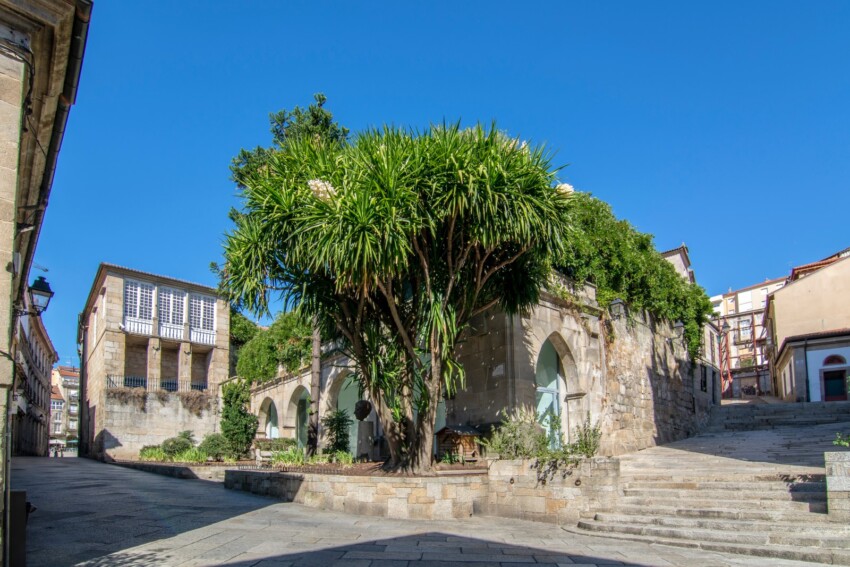
The Archaeological Museum is located right next to the Town Hall and is housed in what was once known as the Bishop’s Palace. The palace was originally built in the 12th century but has undergone several renovations and extensions over the centuries and is now an excellent combination of Romanesque, Gothic, Renaissance, Baroque and modern elements.
Its façade, a Romanesque patio with Baroque elements, is the result of an 18th-century restoration. Inside, there is an archaeology section, which houses objects and works of art from the Palaeolithic to the Middle Ages, and an area reserved for the fine arts.
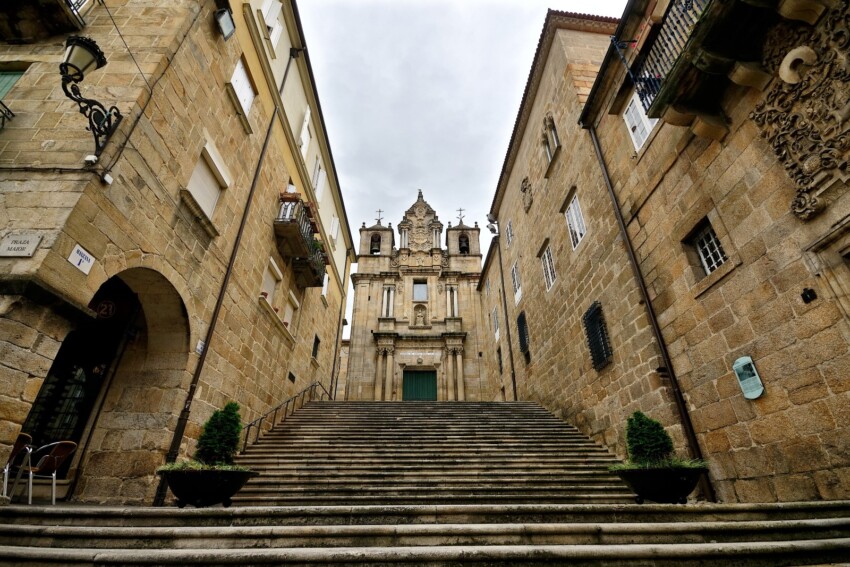
From the Plaza Maior square, it is possible to reach the church of Santa María Madre, which was renovated in the 19th century, but its origins date back to the 11th century. In fact, the city cathedral was erected here in 1084 during the Swabian domination in place of an earlier religious building.
The church now presents itself in Baroque style, with a façade that has managed to preserve part of the 6th-century columns. The interior houses a 16th-century wooden altarpiece depicting Santa María Madre, the patron saint of the tailors’ guild.
Plazuela de la Madalena owes its original shape to the fact that in the beginning it was most probably a space intended to be a cloister. Its name derives from the presence years ago of a chapel owned by the Count of Amarante that was dedicated to Mary Magdalene. The chapel was unfortunately destroyed, as was the cloister.
In the centre of the Piazza is now a granite column on top of which is a cross with the figures of Christ and the Virgin of Sorrows. An important detail of the Piazza certainly lies in the particular rounded stone that was used in the paving. This stone was found in large quantities in the territory of Ourense and was also used in the paving of other streets and squares in the city.
The Palace of the Oca-Valladares family is considered one of the most important Gothic-Renaissance palaces in Galicia. Its construction began in 1552 by Álvarez de Oca and Deza and was completed in 1583. The Renaissance building has two floors and the façade features a balcony adorned with the coats of arms of the most important Galician families. From the 19th century onwards, the palace was abandoned and became first an inn for muleteers and then the headquarters of the Recreo Lyceum, an old cultural society of the city.
The Church of St. Euphemia was built between the 17th and 18th centuries and is now the second largest church in the city. Its façade, designed by Fray Plácido Iglesias, is a perfect combination of Baroque and Galician art styles. Inside, the building has a Latin cross plan, three naves and an 18th century Baroque altar with the image of Cristo de la Esperanza.
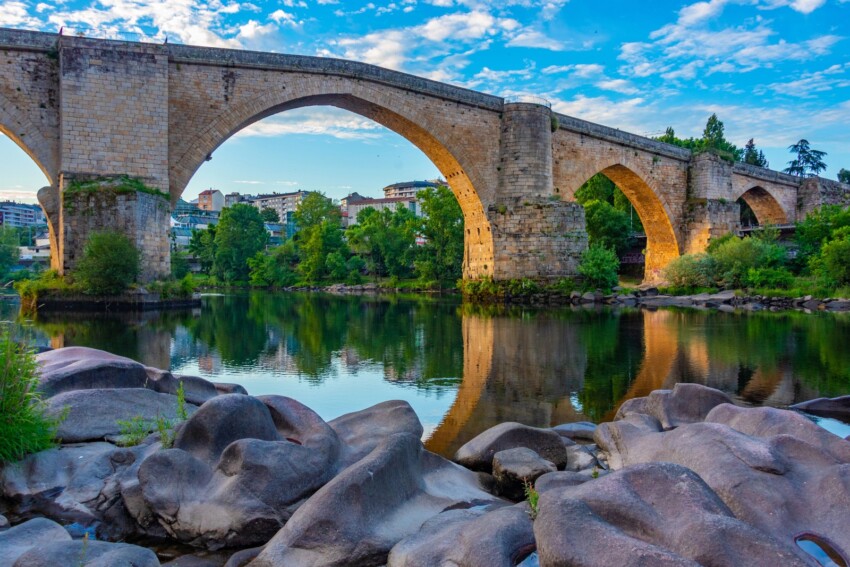
The symbol of the city of Ourense is undoubtedly the Puente Mayor, which over the centuries has been a construction with a dual function. On the one hand, the bridge connected the banks of the river Miño and was an important crossing point to Santiago de Compostela, and on the other it served as a strategic barrier for the city. Originally built during the time of Emperor Augustus, only ashlars at the bases are now preserved of the ancient Roman bridge. It was rebuilt several times in the 13th and 17th centuries.
In the following map you can see the location of the main places of interest mentioned in this article.
Given the fame of its thermal waters, Ourense has become a popular tourist destination. For this reason, the city has equipped itself to welcome tourists and offers a large number of different types of accommodation.
From hotels to flats, every traveller will be able to find the most suitable accommodation in Ourense. The historic centre is not very extensive and is also the best place to stay, as there are many sites of interest here, as well as shops, bars and restaurants.
Ourense has always been considered a city with a strategic location because it connected the north-western Atlantic area with the rest of Spain. It is also easy to reach Portugal from here as the border is only 60 km away.
Those travelling by car can take advantage of the excellent road network that runs through Ourense. For example, from La Coruña or Santiago de Compostela one can reach Ourense via the AP-53, from Vigo and Madrid there is the A-52 and from Lugo the N-540.
The city also boasts a railway station with connections to the entire peninsula. In particular, Madrid is two and a half hours away, La Coruña one hour and Santiago de Compostela only 35 minutes. Ourense does not have an airport but the closest ones are Vigo airport which is 90 km away, Lavacolla in Santiago de Compostela which is 115 km away and Alvedro in La Coruña which is 176 km away.
What's the weather at Ourense? Below are the temperatures and the weather forecast at Ourense for the next few days.
Ourense is a town in Galicia, an Autonomous Community located in north-west Spain. The city is 90 km from Lugo, 100 km from Santiago de Compostela and 180 km from La Coruña.